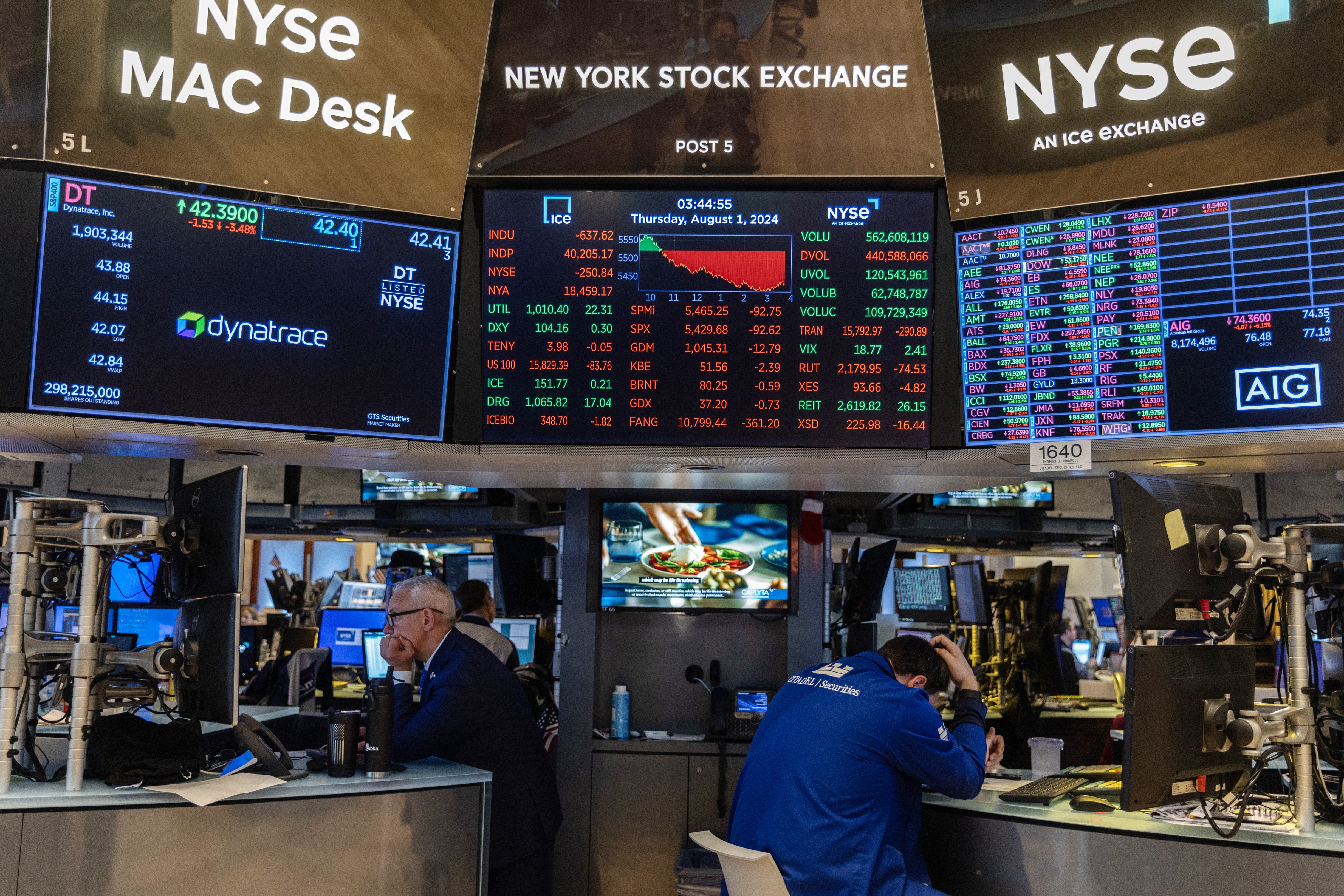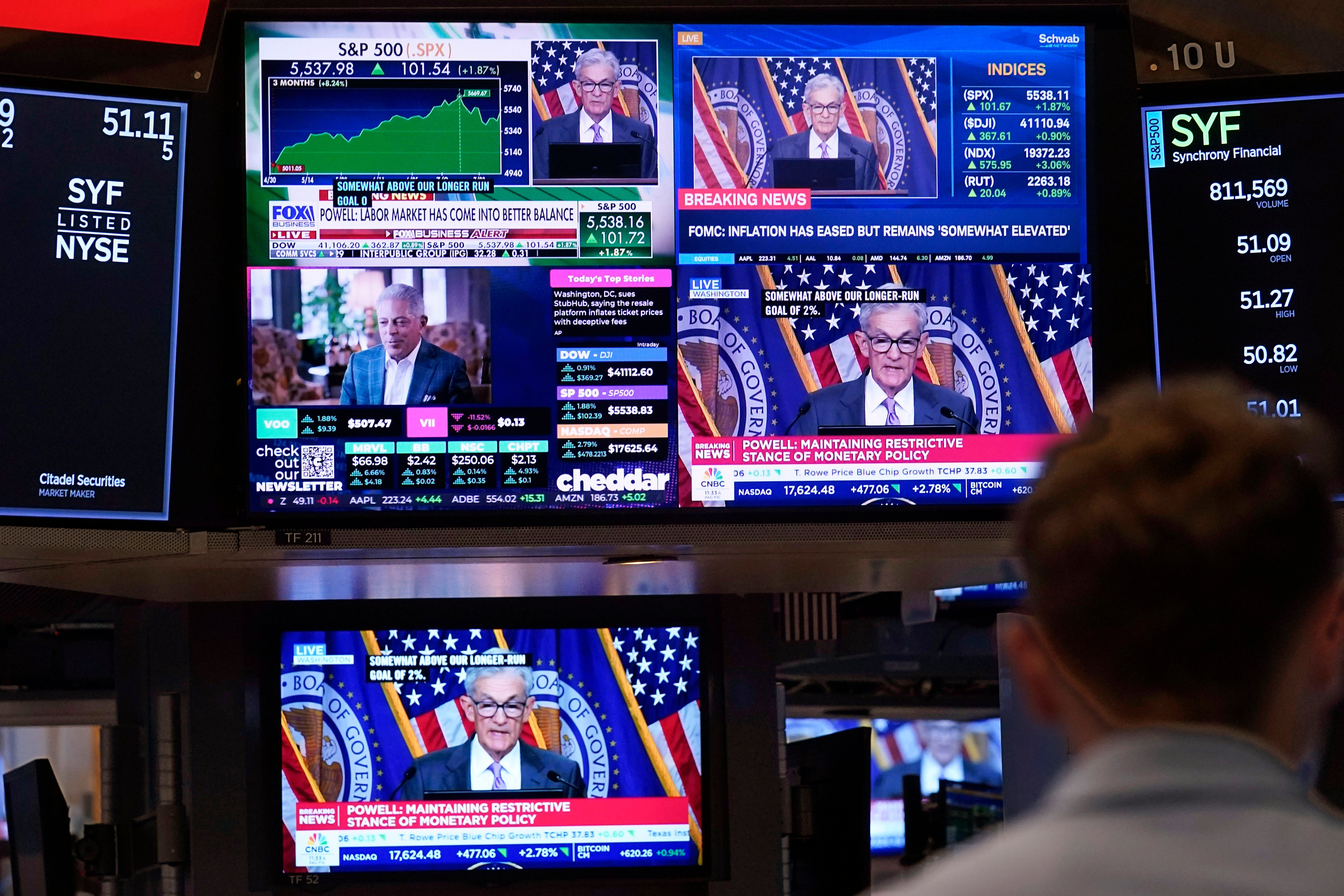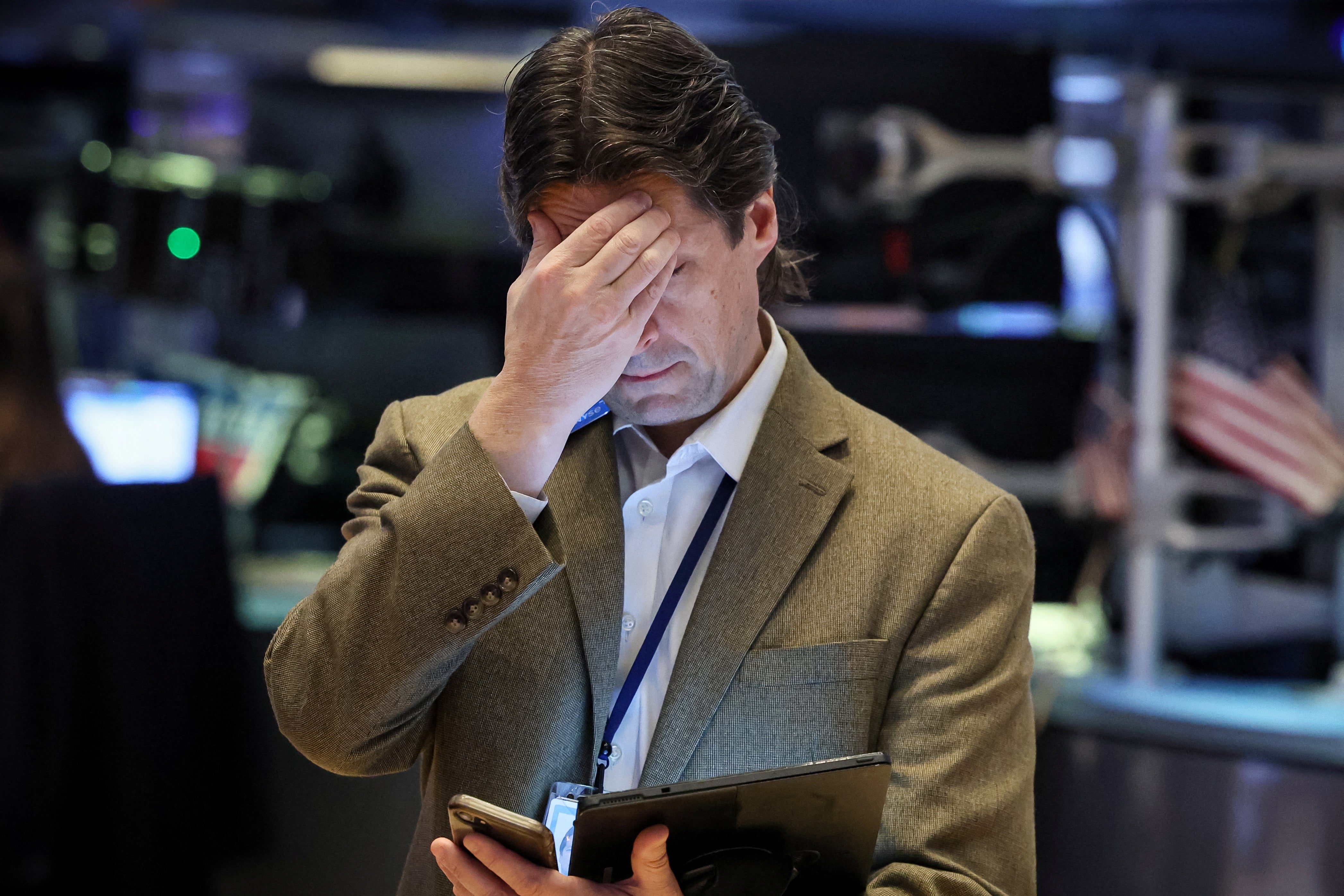Experts are warning of a global recession. Here’s what that actually means
While warning about a 25 percent chance of an economic downturn, Goldman Sachs said the US economy remains “fine overall,” and that the recession risk is “limited”

Your support helps us to tell the story
From reproductive rights to climate change to Big Tech, The Independent is on the ground when the story is developing. Whether it's investigating the financials of Elon Musk's pro-Trump PAC or producing our latest documentary, 'The A Word', which shines a light on the American women fighting for reproductive rights, we know how important it is to parse out the facts from the messaging.
At such a critical moment in US history, we need reporters on the ground. Your donation allows us to keep sending journalists to speak to both sides of the story.
The Independent is trusted by Americans across the entire political spectrum. And unlike many other quality news outlets, we choose not to lock Americans out of our reporting and analysis with paywalls. We believe quality journalism should be available to everyone, paid for by those who can afford it.
Your support makes all the difference.Global equities markets began the week with a steep plunge, reacting to the possibility of a coming US recession that Goldman Sachs economists pegged at 25 percent.
On Monday morning, the Dow Jones Industrial Average fell 945 points, or nearly 2.5 percent, to 38,791.28. In simple terms, if on Friday you had $100 in a fund tracking the Dow, you would now have about $97.50. The two other major indexes, the S&P 500 and the Nasdaq Composite, were down mid-morning by roughly 3 percent and 6 percent, respectively. At the end of the session, the Dow was down 2.6 percent, sliding more than 1,000 points overall. The S&P dropped 160 points, shedding 3 percent of its value, and the Nasdaq was down 3.4 percent, losing 576 points by the closing bell.
The chance of an economic downturn at some point in the next 12 months has risen 10 points, from 15 percent, according to a report that Goldman’s chief economist, Jan Hatzius — who was credited with predicting the 2008 US recession — sent to clients on Sunday.
This, plus a weaker-than-expected jobs report on Friday, with Bureau of Labor Statistics data showing a July slowdown in US job growth — 114,000 new jobs added, missing expectations of a 175,000 gain — as well as a rise in unemployment from 4.1 percent to 4.3 percent, a level not seen since October 2021.
At the same time, Hatzius said the US economy remains “fine overall,” and that the recession risk is “limited.” The Federal Reserve has plenty of leeway to cut interest rates, and can slash them quickly, if needed. Further, the July jobs report, which included a large number of temporary layoffs rather than permanent cuts, may not signal a trend, according to Hatzius.

What is a recession?
President Harry S. Truman once jokingly said, “It’s a recession when your neighbor loses his job. It’s a depression when you lose yours.”
In practice, there is no hard-and-fast rule that defines a recession.
A recession is officially determined by the National Bureau of Economic Research (NBER) Business Cycle Dating Committee, which defines one as “a significant decline in economic activity that is spread across the economy and that lasts more than a few months.” The committee analyzes not only employment numbers but real personal income, sales, industrial production, and consumer spending, adjusting its assessments on what the White House Council of Economic Advisers calls “a holistic look at the data.”
A recession is usually associated with a decline in GDP of 2 percent; an especially severe recession can see declines of 5 percent, according to the International Monetary Fund.
At its most basic, a recession can be triggered by, among other things, higher asset prices, constricting supply, mistimed or ill-conceived economic or fiscal policy, rising unemployment, and housing market crashes, according to the Congressional Research Service. Each recession is different, but the IMF says they typically last about a year.
The US was last in a recession between December 2007 and June 2009, the longest and most severe since 1960. Dubbed “The Great Recession,” the economic slowdown was sparked by a steep decline in home prices, the bottom falling out of the subprime mortgage market, and the collapse of Lehman Brothers. The recovery was unusually slow, with “moderate” economic growth and stubbornly elevated unemployment levels, according to the Federal Reserve.

Recent unemployment numbers have set investors on edge with talk of the so-called Sahm Rule, a historically accurate recession predictor named for its creator, former Federal Reserve economist Claudia Sahm. According to the Sahm Rule, a recession is underway when the three-month moving average of the US unemployment rate is at least a half a percentage point higher than the 12-month low. In this instance, the July 2023 unemployment rate came in at 3.5 percent.
However, Sahm herself told CNBC on Friday that the eponymous indicator, which has had a 100 percent success rate since its inception in 2019, finds that we “are not in a recession now,” although momentum seems to be in that direction, and that “a recession is not inevitable.”
In response to US fears, Japan’s Nikkei average on Monday closed down 12.4 percent, the biggest one-day drop since October 1987. European markets also opened sharply down, with the sharpest downturn seen in more than a year. The question now is, will fears of a US recession spur a global one?
What’s the difference between a recession and a depression?
The difference, in short, is the degree of severity by which the economy is affected.
Like a recession, a depression has no precise definition, but is normally described as a decline in GDP of more than 10 percent.
The Great Depression lasted from 1929 to 1933, during which GDP fell some 30 percent and unemployment hit a whopping 25 percent.
In a 2004 speech, then-Fed Chairman Ben Bernanke explained that the economy rebounded after Franklin D. Roosevelt was sworn into office in 1933. However, unemployment remained in the double digits until the beginning of World War II.
On Monday, even though the markets are reacting as if a recession is inevitable, it may be the equities markets that take the biggest hit — not the broader economy, according to analyst Dhaval Joshi of BCA Research. He told The Guardian that a “decoupling between robust growth in the economy and steadily rising unemployment is unprecedented in our lifetimes.”
“Right now, if we should fear a US recession, the question is: a recession in what?” Joshi said. “As in 2000-01, the biggest risk is a severe recession in the frothy parts of the stock market.”